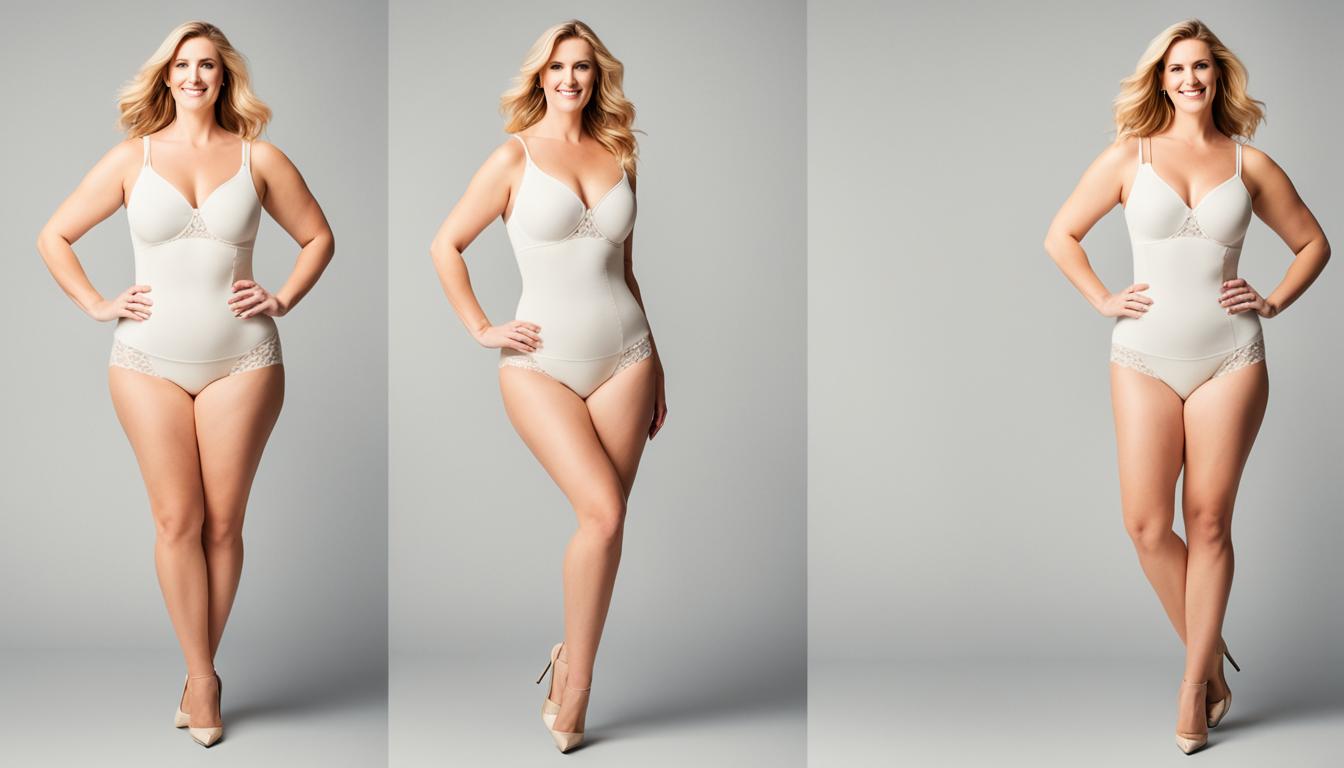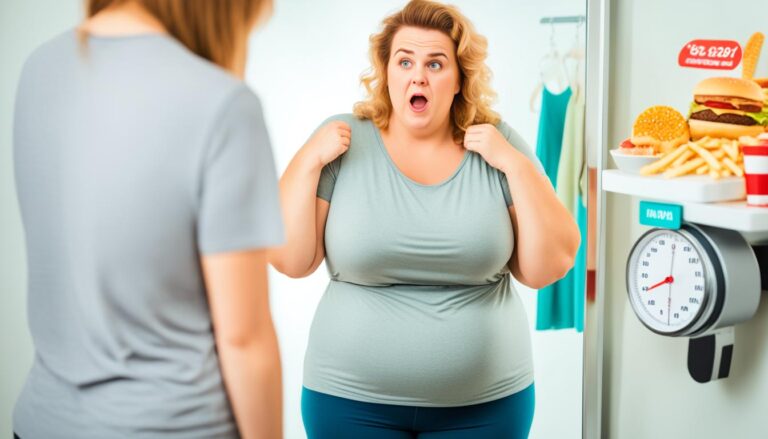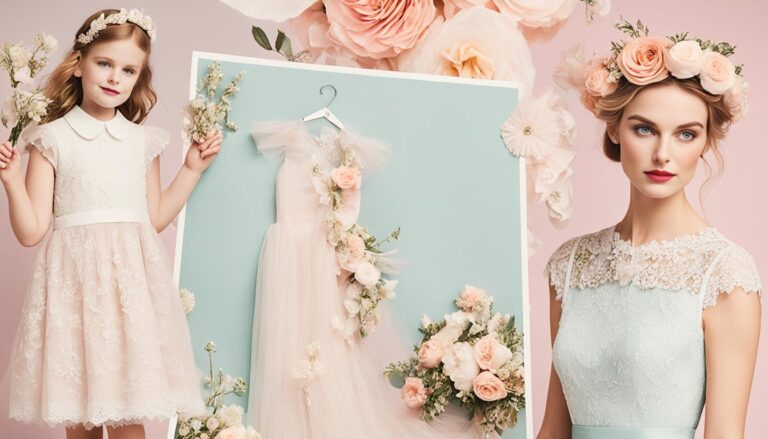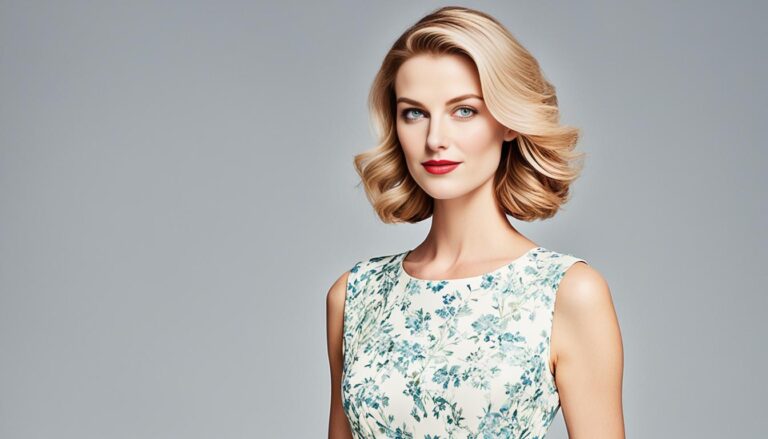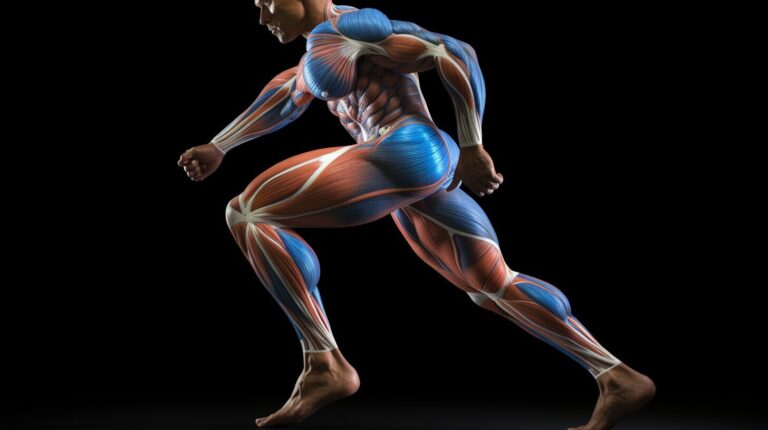Can Soft Gamine Be Curvy?
When it comes to body types, the Soft Gamine is often described as having a more rounded and petite frame. But can a Soft Gamine also be curvy? This question has sparked a discussion within the Kibbe community, as there are variations within the Soft Gamine body type.
The Kibbe Image Identity System, developed by David Kibbe, evaluates an individual’s body based on their bone structure, flesh, and facial features. It considers the balance between yin (soft, rounded) and yang (angular, straight) characteristics. While the Soft Gamine guidelines lean towards a more rounded, angular shape, individual variations exist.
Factors such as height, facial features dominance, and body proportions play a role in determining if someone with curves can still be classified as a Soft Gamine. While the overall yin/yang balance should be maintained, deviations from the guidelines may be acceptable as long as the unique characteristics of each individual are embraced.
Key Takeaways:
- The Soft Gamine body type is traditionally associated with a more petite and rounded frame.
- There is ongoing discussion within the Kibbe community about whether a Soft Gamine can have curves.
- The balance between yin and yang in facial features and body proportions plays a key role in determining if a curvy person can be classified as a Soft Gamine.
- Individual variations exist within each body type, and it is important to consider both facial features and body shape when determining one’s body type.
- Embracing the unique characteristics of each individual and feeling comfortable in one’s own skin is crucial, regardless of societal labels.
Understanding the Kibbe Image Identity System
When it comes to analyzing and determining body types, the Kibbe Image Identity System is a valuable tool. Developed by David Kibbe in the 1980s, this system takes into account an individual’s bone structure, flesh, and facial features to categorize them into specific body types. The Kibbe System emphasizes the balance between yin (soft, rounded) and yang (angular, straight) characteristics.
By considering the overall image and style essence of a person, rather than focusing solely on specific body parts or hiding flaws, the Kibbe System takes a holistic approach to body typing. It recognizes that each body type is unique and offers guidelines to help individuals understand their own body shape and style.
The Kibbe Image Identity System consists of five main families: Dramatic, Natural, Classic, Gamine, and Romantic. Each family is further divided into specific Image IDs that reflect the individual variations within that body type.
It is important to note that the Kibbe System is not a rigid rulebook. While it provides helpful guidelines, individual variations exist within each body type. This means that two people of the same body type may not have exactly the same proportions or features.
Kibbe Image Identity System Categories:
- Dramatic
- Natural
- Classic
- Gamine
- Romantic
Benefits of the Kibbe Image Identity System:
- Helps individuals understand their own body type and style essence
- Provides guidance on how to dress and style according to one’s body type
- Encourages self-acceptance and embracing one’s unique features
- Promotes a positive body image and self-confidence
The Kibbe Image Identity System is a valuable tool for anyone interested in understanding their body type and refining their personal style. By embracing the guidelines and considering the overall image and style essence, individuals can feel confident in their fashion choices and express themselves authentically.
The Relationship Between Soft Gamine and Curves
The Soft Gamine body type is traditionally associated with a more petite and rounded frame. However, there is ongoing discussion about whether a Soft Gamine can have curves. Some individuals believe that as long as the overall yin/yang balance is maintained and the facial features lean more towards a combination of Dramatic and Romantic, a curvier body can still be classified as a Soft Gamine. The key is not to let the curviness and softness of the body dominate over the facial features. It is important to consider the body proportions, facial features dominance, and overall harmony of the individual’s appearance when determining whether a curvy person can be classified as a Soft Gamine.
Embracing the uniqueness of individual body types, including those that fall outside traditional stereotypes, is critical in promoting body positivity and inclusive beauty standards. Understanding that each person’s body is unique and has its own set of characteristics allows for a more inclusive approach to fashion and style.
As a Soft Gamine myself, I have found that embracing my curves while maintaining the balance of softness and angularity in my facial features has allowed me to feel confident and comfortable in my own skin. It’s all about finding the right clothing styles and silhouettes that complement and enhance your natural shape.
When it comes to fashion choices for curvy Soft Gamines, there are no hard and fast rules. It’s important to experiment, try different styles, and find what works best for your body and personal style. Some curvy Soft Gamines may find that fitted clothing that accentuates their curves and creates a sense of softness is the perfect choice, while others may prefer styles that create more angularity and play with contrasting elements.
Ultimately, the relationship between Soft Gamine and curves is subjective and depends on individual interpretations and preferences. It’s essential to embrace and celebrate the diversity of body types and empower individuals to express their unique style confidently.
Weight Gain Patterns and Kibbe IDs
The Kibbe Image Identity System considers an individual’s bone structure, flesh, and facial features when determining their body type. While weight gain can impact the emphasis on certain features, it does not change the overall Image ID. However, weight gain can make the characteristics of a specific ID more noticeable, as weight tends to distribute differently for each body type. Understanding the weight gain patterns associated with each Kibbe ID can provide valuable insights into how different body types may be affected by changes in weight.
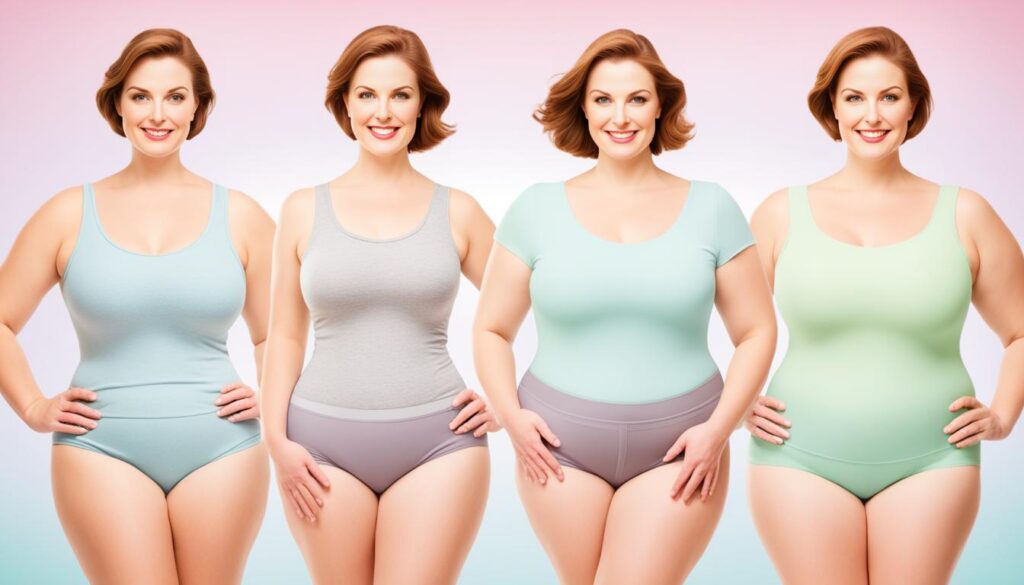
Weight gain patterns vary across different Kibbe body types. For Soft Gamines, weight gain tends to concentrate in areas such as the bust, hips, waist, upper thighs, upper arms, and face. By recognizing these patterns, individuals can have a better understanding of how their bodies may respond to changes in weight and make informed choices regarding their personal style and self-image.
Factors to Consider When Determining Body Type
When it comes to determining one’s Kibbe body type, several factors should be taken into consideration. These factors include age, hormonal changes, and pregnancy. While they may not drastically change the overall ID, they can influence the specific sub-type within a body type and provide a more nuanced understanding of an individual’s body proportions.
First and foremost, it is generally recommended to wait until the age of 25 before attempting to determine one’s body type. This is because the body is still developing and changing before this age, and it’s important to allow it to fully mature before making any assessments.
Hormonal changes can also play a role in how the body is shaped. Fluctuations in hormone levels can affect how weight is distributed and carried, potentially impacting the perception of one’s body type. It’s essential to consider these changes and their effects when determining body type.
Similarly, pregnancy can bring about significant changes in the body. The hormonal shifts and weight gain associated with pregnancy can influence how the body looks and feels. These changes can affect both the overall ID and the specific sub-type within a body type.
By taking these factors into account, individuals can have a more comprehensive understanding of their body type and the unique characteristics that come with it. It’s important to remember that everyone’s body is different, and embracing and celebrating one’s unique shape is key to feeling confident and comfortable in their own skin.
Factors to Consider When Determining Body Type
| Factors | Impact on Body Type Assessment |
|---|---|
| Age | Wait until the age of 25 for a more accurate assessment as the body is still developing before this age. |
| Hormonal Changes | Fluctuations in hormone levels can affect weight distribution and body shape. |
| Pregnancy | Pregnancy can bring about significant changes in the body, impacting both overall body type and sub-type. |
Examining Examples of Soft Gamine Body Types
Looking at examples of individuals who are widely considered to have a Soft Gamine body type can provide insights into the range of variations within this category. Celebrities such as Brigitte Bardot and Audrey Hepburn are often cited as examples of Soft Gamine figures.
While their body measurements may differ slightly, both exhibit characteristics of the Soft Gamine body type. Brigitte Bardot’s measurements, at one point in her career, were reported as 36-20-35, while Audrey Hepburn’s were 34-20-34.
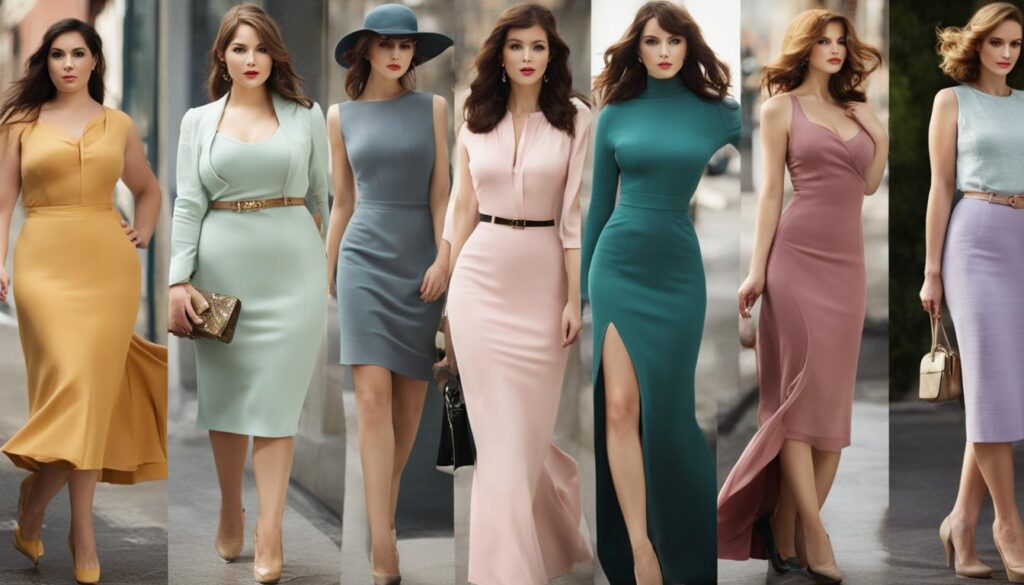
These examples demonstrate that Soft Gamines can have curves, albeit with variations in body shape and facial features. The balance between curves and angles, as well as the dominance of specific facial features, can help determine whether a curvy individual falls under the Soft Gamine category or a different body type.
Conclusion
In conclusion, the Soft Gamine body type, traditionally associated with a more petite and rounded frame, can also embrace a curvy figure. While the guidelines for the Soft Gamine body type generally lean towards a more slender silhouette, individual variations exist within this category. The key factor in determining if a curvy person can still be classified as a Soft Gamine is maintaining the overall balance between yin and yang elements and considering the dominance of facial features.
Understanding the weight gain patterns associated with each Kibbe ID can provide insights into how different body types, including Soft Gamines, may be affected by changes in weight. It is important to note that embracing and celebrating one’s unique body shape is essential, regardless of whether it aligns with traditional definitions of a particular body type.
Confidence and personal style choices play crucial roles in expressing oneself and feeling comfortable in one’s own skin. Fashion for curvy body types offers a variety of options that can highlight and complement the curves of a Soft Gamine figure. By embracing a curvy figure and finding clothing styles that flatter their unique shape, individuals with a Soft Gamine body type can express their personal style while staying true to their natural beauty.
FAQ
Can a Soft Gamine body type be curvy?
Yes, there is some discussion within the Kibbe community about whether a Soft Gamine can also have curves. While the traditional guidelines for the Soft Gamine body type lean towards a more petite and rounded frame, individual variations exist. The main factor that determines if a curvy person can still be classified as a Soft Gamine is maintaining the overall yin/yang balance and considering the dominance of facial features.
What is the Kibbe Image Identity System?
The Kibbe Image Identity System is a body typing system developed by David Kibbe in the 1980s. It evaluates an individual’s body based on their bone structure, flesh, and facial features, considering the balance between yin (soft, rounded) and yang (angular, straight) characteristics. The system categorizes individuals into different families and specific Image IDs, taking a holistic approach to body typing and considering the overall image and style essence of an individual.
How does weight gain affect Kibbe body types?
Weight gain does not change the overall Kibbe ID, but it can make the characteristics of a specific ID more evident, as weight tends to congregate in different areas for each body type. For Soft Gamines, weight gain may be noticeable in the bust, hips, waist, upper thighs, upper arms, and face. Understanding the weight gain patterns associated with each Kibbe ID can provide insights into how different body types may be affected by changes in weight.
What factors should be considered when determining body type?
Factors such as age, hormonal changes, and pregnancy should be considered when determining body type. It is generally recommended to wait until the age of 25 before attempting to type oneself, as the body is still developing and changing before that time. Hormonal changes and pregnancy can also affect how weight is distributed and carried, potentially impacting the perception of one’s body type.
Can Soft Gamine body types have curves?
Yes, Soft Gamine body types can have curves. While traditionally associated with a more petite and rounded frame, there is variation within the Soft Gamine category. Factors such as the overall yin/yang balance and dominance of facial features play a role in determining whether a curvy individual falls under the Soft Gamine category or a different body type.
Are there any examples of Soft Gamine body types with curves?
Yes, celebrities such as Brigitte Bardot and Audrey Hepburn are often cited as examples of Soft Gamine figures. Both exhibit characteristics of the Soft Gamine body type, with slight variations in their body measurements. While their measurements may differ, the balance between curves and angles, as well as the dominance of specific facial features, helps determine whether a curvier individual falls under the Soft Gamine category.
What should curvy individuals consider when it comes to fashion and embracing their body type?
Embracing and celebrating one’s unique body shape is essential, regardless of whether it fits within traditional definitions of a particular body type. Confidence and personal style choices play crucial roles in expressing oneself and feeling comfortable in one’s own skin, regardless of societal labels. Exploring fashion options that flatter and highlight curves can help curvy individuals embrace their body type and feel confident in their style choices.
